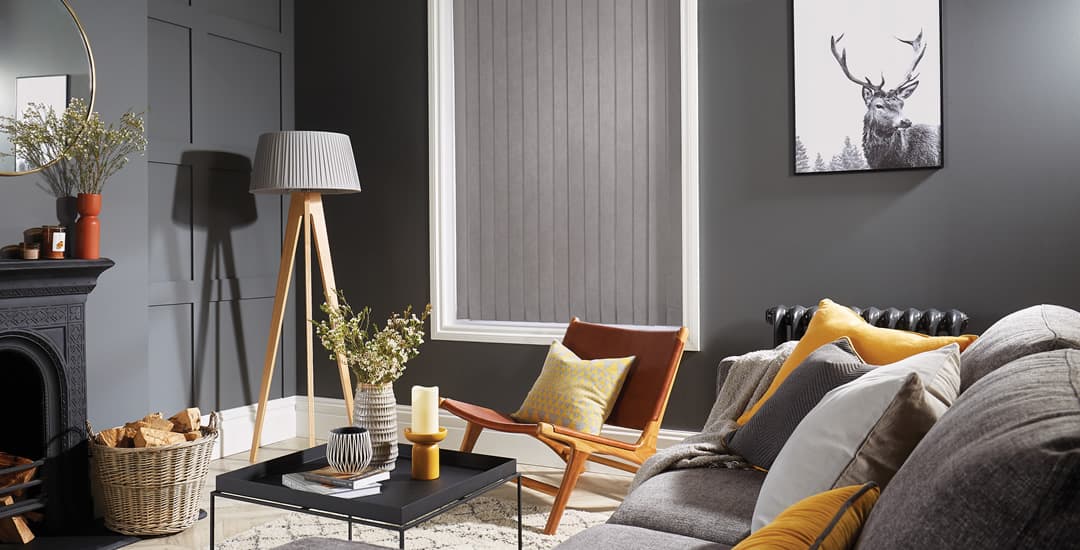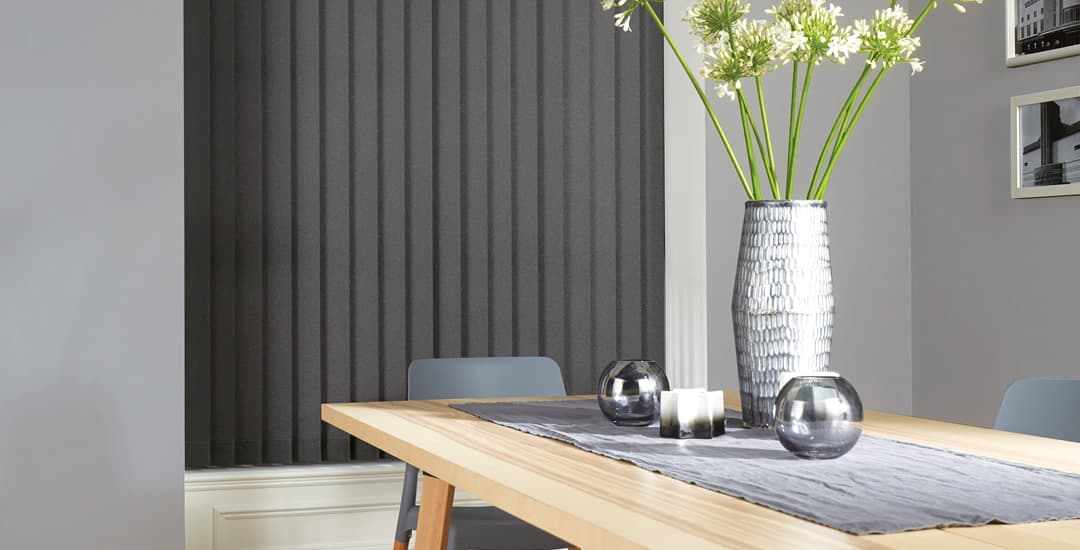
Can you see through vertical blinds at night? Assuming that they’re closed properly, probably not. However, “see through” means different things to different people; for some, blinds that you can’t see through simply means ensuring that nobody outside can tell that you’re only wearing your pants, while for others, it means blocking any evidence of what is going on inside from the outside world, including any level of light leakage.
In this blog post I will explain whether or not you can see through vertical blinds at night in various different scenarios, which should provide the most comprehensive and blinds-geeky answer for this question that you will ever find!
What are vertical blinds?
Before we get on to covering what can be seen through vertical blinds at night in different situations, I just want to make sure that everyone is up to speed on what vertical blinds actually are.
These are the blinds made of long thin strips of fabric (called louvres) which hang from a headrail to the level of the floor or windowsill, with a connecting chain at the bottom holding each individually weighted louvre in place.
They’re the only type of blinds that look like this, and also the only type of blinds that open from side to side instead of from bottom to top, and they’re suitable for all types of windows but are a particularly sound choice if you’re looking for blinds for very tall or large windows, and French or patio doors.
Can you see through vertical blinds at night if they’re blackout blinds?
When it comes to the fabric of a blackout blind itself, this is impermeable to light. You could hold a bright torch flat against the fabric and nothing would shine through on the other side. This being the case, the answer to “can you see through vertical blinds at night if they’re blackout blinds” would seem to be obvious; but this is not necessarily so!
Now, if you had blackout vertical blinds that were fully closed with the louvres lying flush and still, and your blind was hung in such a way as to negate any light leakage (in either direction, inwards or outwards) around the edges of the blind, then nobody can see through them in any sense of the word.
This means not only that they couldn’t see what was going on inside, but even whether or not you had a light on in there would elude them.
However, if the louvres are in motion at all, people outside might get glimpses of inside through the narrow gaps between louvres that this would create. Also, if your blackout blinds allow a little light leakage into the room from the sun due to the way they’re hung, they will also allow a little light leakage out at night too, which would allow people outside to be able to tell that you have a light on inside.
What can you see through vertical blinds at night if they’re made of dimout fabrics instead?

Any window blind fabric that isn’t a blackout fabric is called a “dimout” fabric. These are light-permeable to some degree, more often than not a very, very mild one.
For instance, thick dimout blinds might block almost all light in or out, and just show up as very faintly lighter than the surrounding wall when viewed from outside in the dark with the blinds shut and a light on.
Vertical blinds made of thinner fabrics may allow a view of shadows and movement to those outside, particularly if you’re close to the window. That’s about it; nobody could tell details, such as perhaps the colour of your clothes and so on, but if you’re keen to avoid people knowing who is in and where they are, this might be an annoyance.
Can you see through vertical blinds at night if they’re not closed snugly?
In order to maintain your privacy at night with vertical blinds (whatever this means to you, from stopping any light leakage to just ensuring that you’re not nicked for flashing because you forgot your bath towel) the blind’s louvres have to be closed tightly and with the louvres lying flat and flush against each other.
Vertical blind louvres are made to overlap each other, like the tiles of a roof – and when they’re closed in such a way as to enable this, they present as a solid, unbroken wall of fabric.
However, if they don’t lie flush for whatever reason – perhaps because you didn’t quite tilt the louvres all the way together, you have a fabric or chain tangle, or the cat thinks it belongs to Schrodinger rather than Sharon and is sitting with its head on the other side of the blind, this will theoretically provide a narrow, limited view directly into the room.
Can you see through vertical blinds at night if they’re moving in a breeze?
Finally, this is the other scenario in which people might be able to get a glimpse of something inside happening behind your vertical blinds. Vertical blind louvres are made of fabric; this fabric is treated with a starching agent and the bottom of each louvre is weighted and connected to its neighbour with a chain to minimise movement, but they are still fabric nonetheless.
This means that they may move in a breeze, if a door is opened and closed with a whoosh, or even in some cases if you have very draughty windows, or have a radiator shooting heat upwards that makes the louvres sway.
In the types of winds that will really make vertical blind louvres dance, the chances are high that you’d have the window behind them closed anyway, so this is unlikely to ever become a huge issue – but it is worth mentioning that swaying louvres can once more cause small gaps to appear and disappear, which could allow a determined person outdoors to get some limited view of inside.




